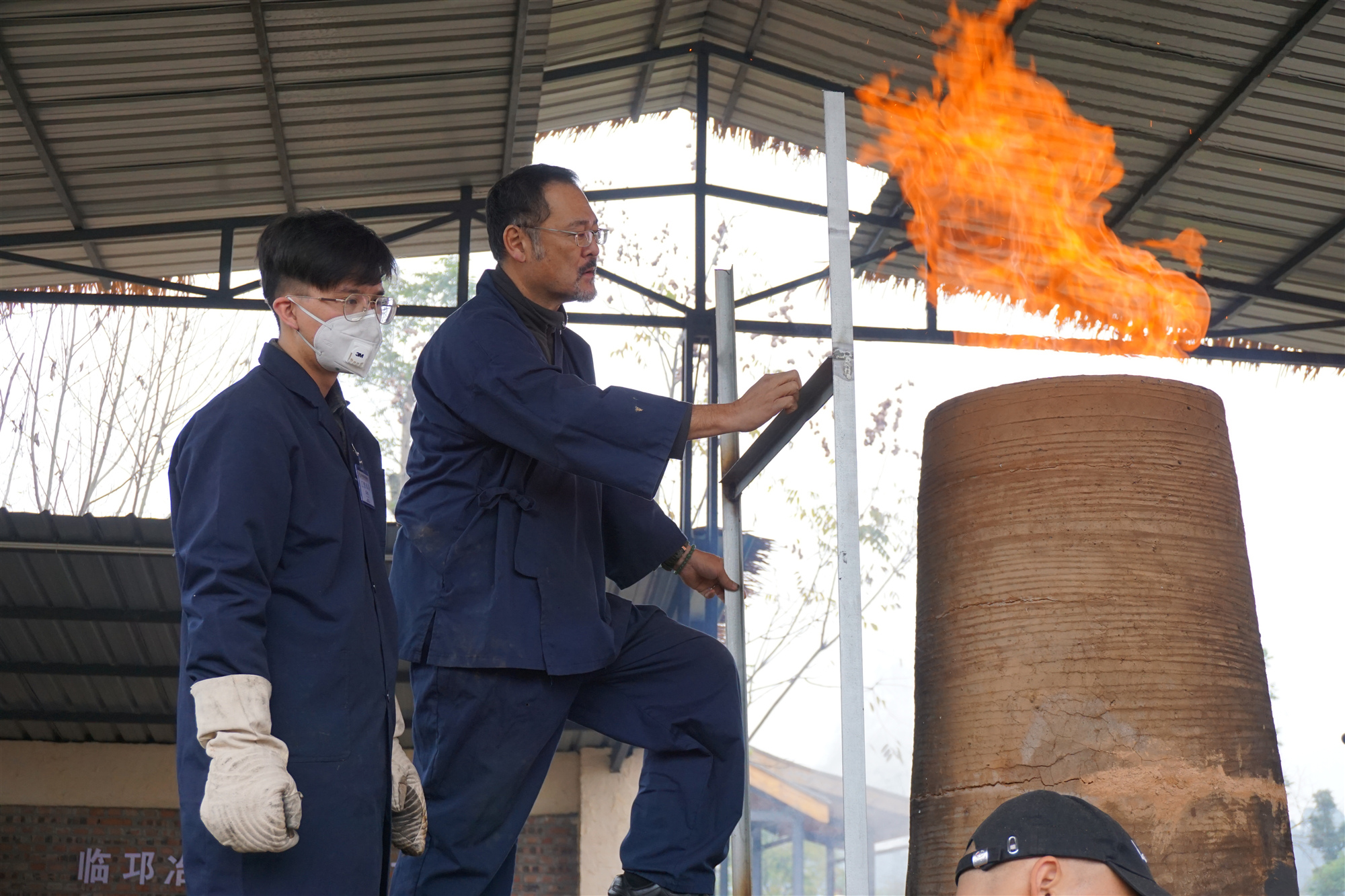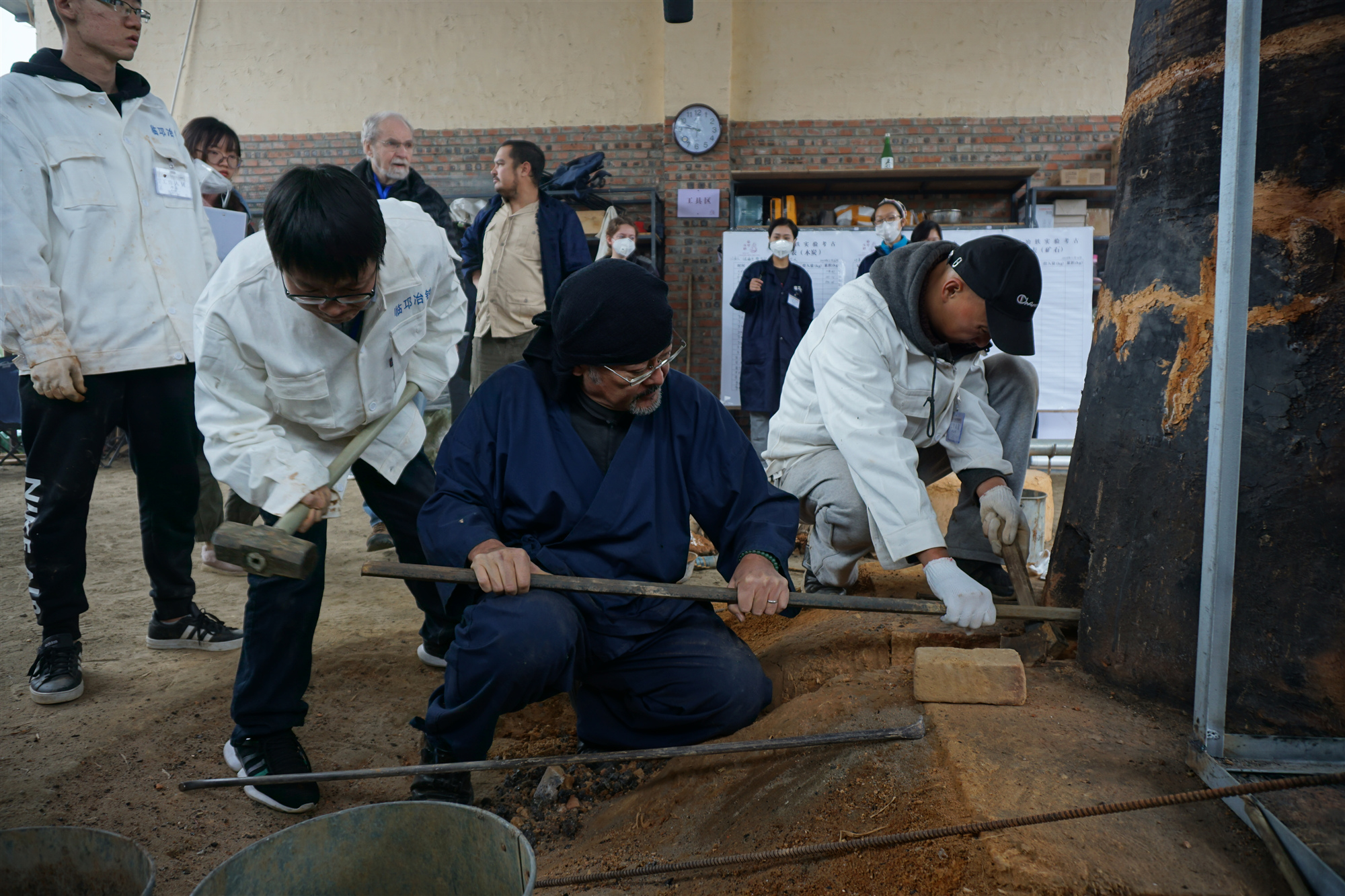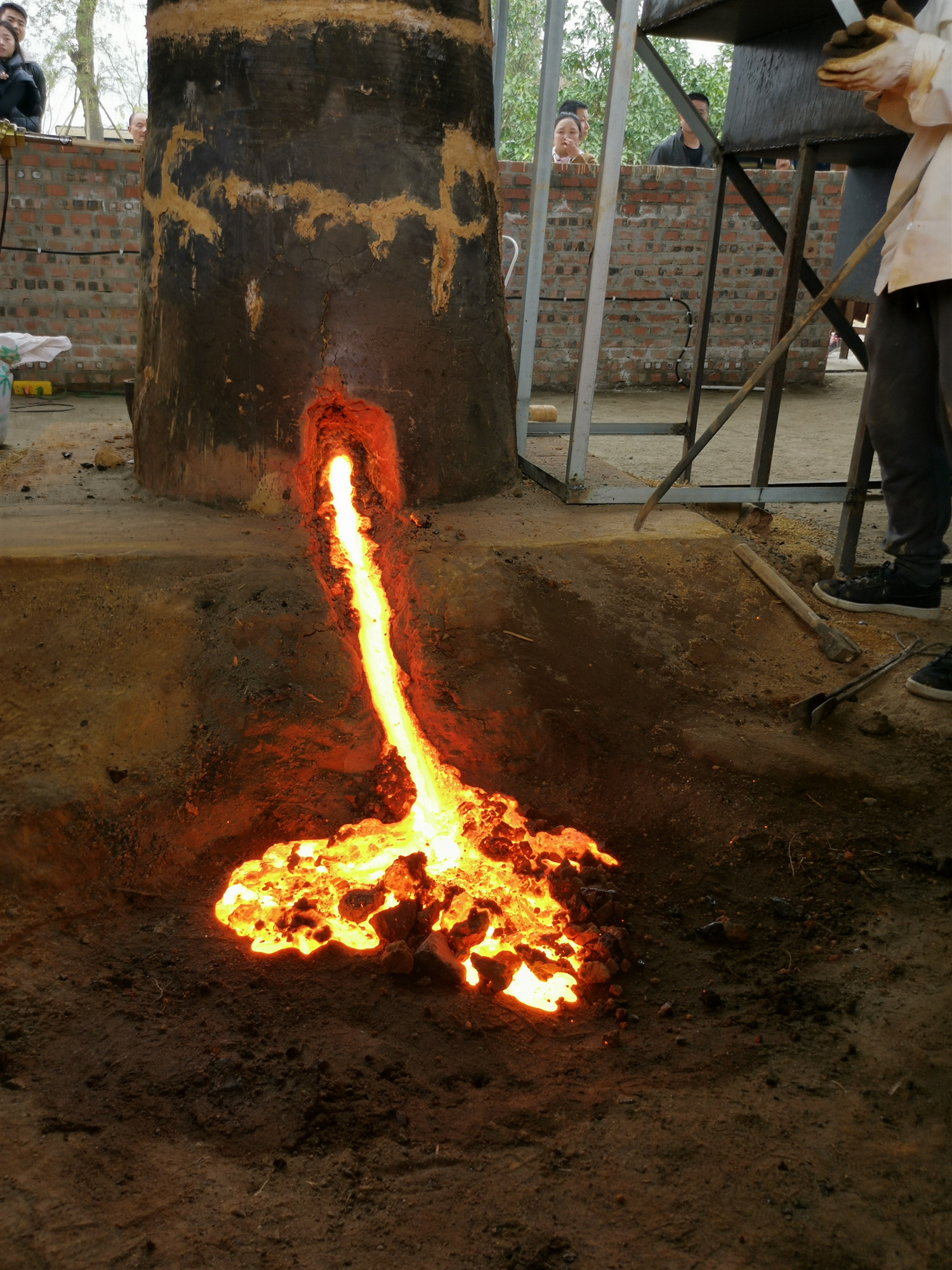
A Japanese archaeologist examines the shaft furnace in the city of Qionglai in southwest China's Sichuan Province, Nov. 16, 2019. (Xinhua/Tong Fang)
How did ancient Chinese smelt iron 2,000 years ago? Chinese and Japanese archaeologists have worked it out!
CHENGDU, Nov. 18 (Xinhua) -- Chinese and Japanese archaeologists have successfully restored the iron-smelting techniques that date back about two millenniums.
Based on the archeological discovery of the Han Dynasty (206 BC-AD 220), archaeologists built a shaft furnace and successfully smelted pig iron in an experiment conducted over the weekend in the city of Qionglai in southwest China's Sichuan Province.

Chinese and Japanese archaeologists work together on the smelting experiment in the city of Qionglai in southwest China's Sichuan Province, Nov. 16, 2019. (Xinhua/Tong Fang)
The experiment provides data and a successful case for the study of iron-smelting techniques in the Han Dynasty, according to the archaeologists.
The experiment was jointly sponsored by Sichuan University, the institutes of cultural relics and archaeology in Chengdu and Sichuan, Japan's Ehime University and the municipal government of Qionglai.

Melted iron flows from the furnace on Nov. 16, 2019. (Xinhua/Tong Fang)
Iron is regarded as one of the most important materials of Chinese civilization. Ancient Chinese were able to refine liquid iron as early as the Spring and Autumn Period (770 BC-476 BC).
Li Yingfu, vice dean of the College of History and Culture of Sichuan University, said the iron-smelting techniques in the Han Dynasty not only greatly promoted production in ancient China, but also contributed to the development of metallurgy in Southeast Asia and beyond. ■



